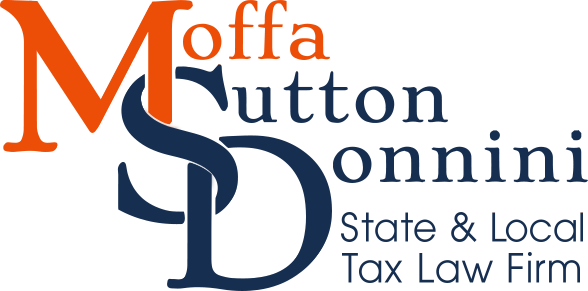NEWS & INSIGHTS


When Apportionment Goes Too Far: Challenging Single Sales Factor and Market-Based Sourcing Distortion
As states aggressively adopt single sales factor (SSF) apportionment and market-based sourcing (MBS) rules, businesses are increasingly subject to state tax assessments that appear disconnected from economic reality. In a recent panel hosted by the ABA State and Local Tax Committee, experts examined the constitutional foundations, modern apportionment practices, and practical strategies for proving distortion under UDITPA § 18. The discussion revealed growing tension between state revenue goals and taxpayer protections—raising the stakes for companies with multistate operations.
A Constitutional Framework: From Hans Rees to Moorman
The U.S. Supreme Court has long recognized limits on state apportionment authority. In Hans Rees’ Sons, Inc. v. North Carolina, the Court invalidated an apportionment formula that attributed 66% to 87% of a taxpayer’s income to North Carolina, despite uncontested evidence showing no more than 21.7% was connected to the state. By contrast, in Moorman Manufacturing Co. v. Bair, the Court upheld Iowa’s use of a single sales factor formula, despite its divergence from the three-factor standard used by most states at the time. The Court emphasized that while uniformity is not required, taxpayers must show concrete evidence of distortion to succeed in a constitutional challenge.
The Growth of SSF and the Legacy of Moorman
Following Moorman, many states turned to SSF formulas as economic development tools. SSF typically favors in-state businesses by excluding property and payroll from the apportionment formula, thereby shifting more income to out-of-state sellers. As of January 2025, 35 states have implemented mandatory SSF apportionment.
Although Moorman upheld the SSF formula in that specific case, the Court left open the possibility of future “as-applied” challenges if a taxpayer can demonstrate that the formula results in arbitrary or extraterritorial taxation. This sets the stage for modern disputes over distortion—particularly as more states adopt aggressive sourcing standards.
The Complexity of Market-Based Sourcing
The shift to market-based sourcing for services and intangibles has added further complexity. While the Multistate Tax Commission revised its model rules in 2014 and 2017 to reflect a unified MBS approach, state adoption has been inconsistent. Some states follow the MTC’s model closely, others only loosely, and many have introduced their own sourcing rules altogether.
These differences create divergent outcomes even under similar facts. States also differ in how they treat sales of intangible property—like capital gains from stock sales or partnership interests—leaving gaps in the rules and increasing uncertainty for taxpayers.
When the Formula Fails: UDITPA § 18 and Alternative Apportionment
When a state’s standard apportionment method does not fairly represent a taxpayer’s business activity, UDITPA § 18 provides a legal pathway for relief. The statute permits taxpayers (or tax administrators) to seek alternative methods, including separate accounting, exclusion or inclusion of factors, or entirely new methodologies designed to produce equitable results.
However, applying § 18 is far from straightforward. States vary widely in how they interpret and apply it, and it’s often unclear what level of distortion warrants relief—or what alternative method should be used. There is also debate over whether one taxpayer’s successful request sets a binding precedent, or whether such relief is treated as fact-specific and non-precedential.
Strategic Uses of Alternative Apportionment
Taxpayers may consider alternative apportionment in a range of scenarios: large gains from asset or business sales, government contracts, intercompany transactions, or sales through distribution centers. These transactions can distort the sales factor and inflate income allocated to states with minimal actual activity.
States, on the other hand, sometimes push for alternative apportionment under old cost-of-performance statutes or seek to impose forced combination to bring untaxed income into the base. These tactics further underscore the need for clear standards and taxpayer vigilance.
Allocable Income and the Importance of Classification
Classifying income as apportionable (business income) or allocable (nonbusiness income) can significantly affect the tax outcome. Allocable income is assigned entirely to a single state, making the distinction critical in high-value transactions such as sales of business interests. Disputes often arise over whether the asset sold was part of a unitary business. In the case of partnerships, these disputes have led to renewed attention to the concept of “investee apportionment.”
California’s Unique Approach
California’s approach to alternative apportionment features a multi-layered, confidential process involving audits, protests, appeals, and settlements. While taxpayers may seek alternative apportionment at various stages, the Franchise Tax Board (FTB) handles these requests in a manner that limits public visibility. Ongoing cases like Smithfield Packaged Meats Corp. and Janus Capital Group may provide rare insights into how California courts evaluate apportionment distortion claims.
Conclusion: A Call for Fairness and Clarity
States have increasingly embraced SSF and MBS as tools to expand their tax base, but these formulas are not immune from challenge. While Moorman set a high bar, it did not grant states unlimited discretion. Taxpayers still have a constitutional right to challenge apportionment formulas that result in substantial distortion or extraterritorial taxation.
Alternative apportionment under UDITPA § 18 remains a vital, though underutilized, remedy. To succeed, taxpayers must be prepared with detailed, fact-specific evidence and a reasonable alternative method. As apportionment methods continue to evolve, the importance of building strong legal and factual records has never been greater.
© 2025 Jeanette Moffa. All Rights Reserved.
Share
Additional Articles by the SALTy Orange at Moffa Tax Law:
Florida Bar Tax Section Annual Meeting Washington D.C.
NEWS & INSIGHTS Florida Bar Tax Section Annual Meeting 2025 Leadership, Legislation, and Luxury: Everything You Need to Know About…
When Is a State Income Tax Constitutional? Lessons from Underwood Typewriter Co. v. Chamberlain
NEWS & INSIGHTS When Is a State Income Tax Constitutional? Lessons from Underwood Typewriter Co. v. Chamberlain In the world…
Motor Vehicle Industry Sales Tax Issues
NEWS & INSIGHTS Inside a Florida Sales Tax Audit: Tricks and Techniques Used by the DOR to Catch Auto Dealers…

Jeanette Moffa, Esq.
(954) 800-4138
[email protected]
Jeanette Moffa is a Partner in the Fort Lauderdale office of Moffa, Sutton, & Donnini. She focuses her practice in Florida state and local tax. Jeanette provides SALT planning and consulting as part of her practice, addressing issues such as nexus and taxability, including exemptions, inclusions, and exclusions of transactions from the tax base. In addition, she handles tax controversy, working with state and local agencies in resolution of assessment and refund cases. She also litigates state and local tax and administrative law issues.


